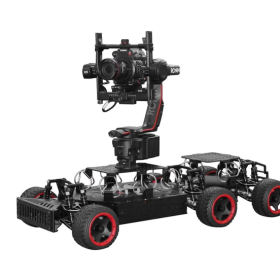The APM software provided granular insights that contextualized the information behind every efficiency alert, enabling the IT group to unambiguously identify inefficiencies and tackle them swiftly. As a end result, transaction instances have been considerably improved, and system downtimes had been decreased dramatically. This case underscores how an in depth view of the application’s efficiency can lead to better useful resource allocation and more practical resolution of issues before they’ll impact the end-user expertise. A successful utility performance management initiative begins with a clear understanding of each present system capabilities and anticipated future calls for. In this context, establishing complete performance baselines is crucial since these baselines act as reference factors for measuring the effectiveness of newly carried out strategies. With Out an correct understanding of current metrics corresponding to response instances, throughput, and error charges, it turns into challenging to measure the impression of efficiency improvements.
Prime 5 Apm Instruments

For occasion, when an APM device detects a slowdown in software response occasions, it could mechanically set off an incident report within the incident management system, making certain that the best staff is alerted at once. This seamless communication between instruments not only saves time but in addition reduces the danger of human error, permitting teams to concentrate on decision somewhat than coordination. These tools collect essential information on response times, error rates, and user interactions. With this info, developers can rapidly spot and repair performance issues earlier than they impression users. A good APM software program resolution wants to provide timely, actionable insights to developers for them to determine https://www.globalcloudteam.com/ application performance points and work toward their resolution.
That’s precisely what efficient dashboards for monitoring key efficiency indicators (KPIs) in utility efficiency monitoring (APM) instruments supply. One Other important strategy includes adopting a proactive approach to application optimization. As A Substitute of reacting to performance issues after the actual fact, organizations ought to utilize proactive monitoring to predict tendencies and potential future failures.
How Does Apm Work?

Compliance metrics can also be utilized in stakeholder stories to show adherence to SLAs. Teams can monitor apps in each staging and production environments, serving to builders set up a culture of continuous suggestions. APM software program collects massive amounts of information, and the analytics and reporting features within APM tools are central to the process of changing captured data into actionable insights. DDCM zeros in on particular person app elements (such as net and utility servers), monitoring particular code sections, exterior service calls, database queries and other components on the code stage.
It assists organizations in building sturdy, high-performance functions, gives round the clock monitoring help, and helps in troubleshooting problematic purposes and code. APM also takes care of the end-user metrics which give helpful insights on what’s working the most effective for his or her functions and what’s not. Furthermore, the rise of microservices architecture is reshaping the APM landscape, requiring instruments that may monitor distributed systems effectively. This structure permits for greater scalability and suppleness but also introduces complexity in monitoring efficiency throughout multiple companies. As a outcome, APM options are evolving to offer deeper insights into service interactions and dependencies, enabling groups to pinpoint efficiency bottlenecks extra effectively. In summary, integrating APM with modern DevOps practices represents a practical strategy for delivering high-performance functions in today’s fast-evolving software program landscape.
- By integrating BTM with other efficiency management tools, organizations can create a complete efficiency strategy that not only addresses present challenges but also anticipates future demands.
- By incorporating APM instruments into the software program lifecycle, organizations can foster collaboration and guarantee applications meet desired performance requirements.
- This forward-thinking strategy relies on machine studying algorithms that sift by way of huge datasets to offer predictive insights.
- Nevertheless, they should additionally decide which forms of points are too essential to entrust to automation software alone.
Understanding Application Efficiency Monitoring (apm): Key Benefits And Finest Practices
These elements present a complete framework that supports proactive performance administration and permits developers to repair issues before they become crucial problems. Furthermore, the combination of machine studying and artificial intelligence into APM tools is revolutionizing how organizations method software performance. By leveraging predictive analytics, companies can anticipate potential efficiency points and optimize useful resource allocation, guaranteeing that functions stay responsive even during peak usage occasions. Integrating these components permits teams to have actionable insights into application habits, paving the method in which for improvements and optimizations wherever necessary. Additionally, APM instruments often provide automated alerts that notify groups of efficiency anomalies, enabling swift responses to potential points. This proactive approach not solely minimizes downtime but also helps in sustaining a aggressive edge in a fast-paced digital panorama.
Code-level performance segregation helps in gaining insights on the components of the code throwing errors, dependencies which might be slowing down the requests, and the methods within the utility which may be slow performers. Each APM software specializes in monitoring a selected set of metrics and offers insights based mostly on them. APM supplies application performance management extra visibility into database efficiency via metrics such as transaction monitoring which may establish sources of latency, SQL syntax error, and server-level errors.
Balancing these elements ensures that the performance management process stays adaptive and aware of the ever-changing calls for of the appliance panorama. Moreover, with APM instruments automating many efficiency management tasks, IT professionals can concentrate on strategic initiatives rather than reactive firefighting, leading to an general increase in efficiency across the group. The integration of APM with different IT management options can further streamline workflows and improve collaboration among groups. Additionally, APM contributes to attaining enterprise objectives by aligning utility performance with user expectations. This alignment translates to raised customer satisfaction, reduced churn charges, and in the end, increased income.

However when the appliance is simply under a heavy load, 70% CPU utilization for a short period of time isn’t unexpected. It might make extra sense to fireside an alert solely when CPU consumption turns into very high — like 85% or 90% — throughout high-traffic durations. Circumstances might also come up the place you don’t need to handle the efficiency of a given utility — one deployed in a dev/test surroundings, for instance — and, thus, you’ll have the ability to ignore the data it generates. Although not each greatest practice described here necessarily applies to each enterprise, they’re all methods the standard organization can use to get the most out of APM programs. APM ensures compliance by monitoring for vulnerabilities, logging activities, and providing alerts for unauthorized entry, aiding adherence to regulations like GDPR and HIPAA. Monitoring UX ensures that buyers are glad with the app’s performance and usefulness.
As developers and organizations continue to undertake APM practices, embracing the newest developments will guarantee sustained performance and consumer satisfaction within the ever-evolving digital landscape. The ongoing evolution of APM is not going to solely enhance operational efficiency but additionally foster innovation, permitting businesses to ship superior consumer experiences and adapt swiftly to market changes. This alignment ensures that the chosen APM answer addresses the organization’s critical pain points, enabling tailored implementation strategies. Moreover, it might be useful to conduct workshops or brainstorming classes with these stakeholders to foster collaboration and creativity. By openly discussing challenges and expectations, teams can prioritize features that will provide the most worth, similar to real-time analytics, person expertise monitoring, or integration capabilities with current methods. This collaborative strategy not only enhances the probability of a successful implementation but also promotes a culture of shared duty for software performance throughout the organization.
APM software is responsible for detecting all ongoing and probable points that may come up in a component which will technology trends later result in a business impression. Groups are kept knowledgeable of such points so that they’re ready to handle them as they arrive. Components like deployment choices, scalability, value, features, and integrations should be thought of. In that case, 70% CPU utilization can be a concern as a result of it could possibly’t be explained by high numbers of requests and would likely as a substitute mirror a problem like buggy code inside the applying.














